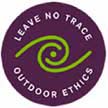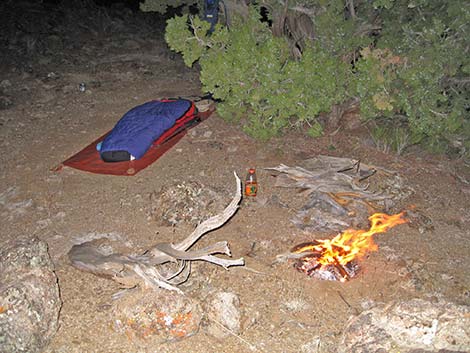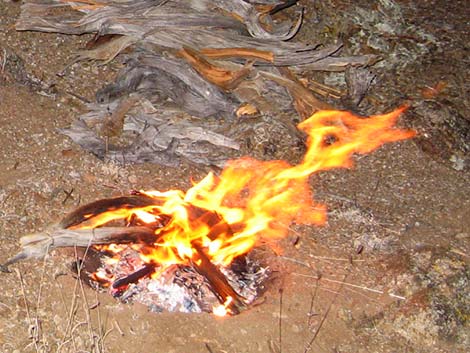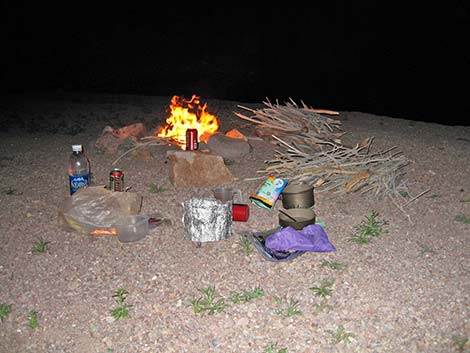
 |
Leave No Trace is a simple idea: we can visit wild places in a manner that records little or no sign of our passing. |
Leave No Trace hopes to influence the decisions people make while visiting public lands by educating them about recreational effects on the land and techniques to minimize or prevent impacts. Leave No Trace is best understood as an educational and ethical program, not as a set of rules or regulations.
Leave-No-Trace Campfires
Minimize Campfire Impacts: Campfires are not allowed in some backcountry areas (e.g., Mt. Charleston Wilderness Area, Zion, and the Grand Canyon), so eat cold food or cook with gas stoves. In areas where fires are permitted, use established fire rings and keep fires small. Be sure that the fire is out cold before you leave, and be sure to bury or scatter the cold ashes widely. If you can't find an established fire ring, don't make a new one. Rather, dig a shallow pit, and build the fire in the pit. You don't leave blackened stones, and you can cover up the pit and rehabilitate the site before you leave without a trace. Always be careful with fires.
When it’s time to extinguish your fire, do so completely. Let the fire burn out and turn to ash. Then pour plenty of water on the embers and coals, drowning them entirely. The Forest Service advises doing so until all hissing noises stop. Often, that won’t be until the ash is soaked and soupy. If you don’t have enough water, or none at all, stir the embers with surrounding dirt and sand. Continue stirring and raking until no embers are visible, but also until the ash is no longer hot to the touch. As Smokey Bear says, “If it’s too hot to touch, it’s too hot to leave.” So place your hand directly over (but not touching) the ashes to check the temperature. Do this before going to bed and again before leaving your campsite.
 |
This campfire in the South McCullough Wilderness Area follows LNT principals. The fire pit (no ring of rocks) is small and away from flammable grasses (the tree is farther back than it looks). I've collected dead-and-downed wood rather than breaking branches off of live trees, and I'm only burning small sticks. I sat on the ground rather an build benches, although these can be rehabilitated. |
 |
LNT campfire. Notice the shallow pit, no ring of stones, and small size. Using small sticks, the wood burns completely so there are no unsightly burned logs or large pieces of charcoal. The next morning, I drowned the fire-pit and buried the ashes, leaving no trace of my passage. Notice also the bare ground around the fire. Bare ground helps keep the fire in the ring, not out in the forest. |
 |
LNT campfire. I used an existing fire-ring here, but notice that small size of the sticks. Small sticks burn completely and leave no charcoal. Bare ground around the fire help ensure the fire can't spread to surrounding shrubs. |
Happy hiking! All distances, elevations, and other facts are approximate.
![]() ; Last updated 250422
; Last updated 250422
| Hiking Around Las Vegas | Glossary | Copyright, Conditions, Disclaimer | Home |